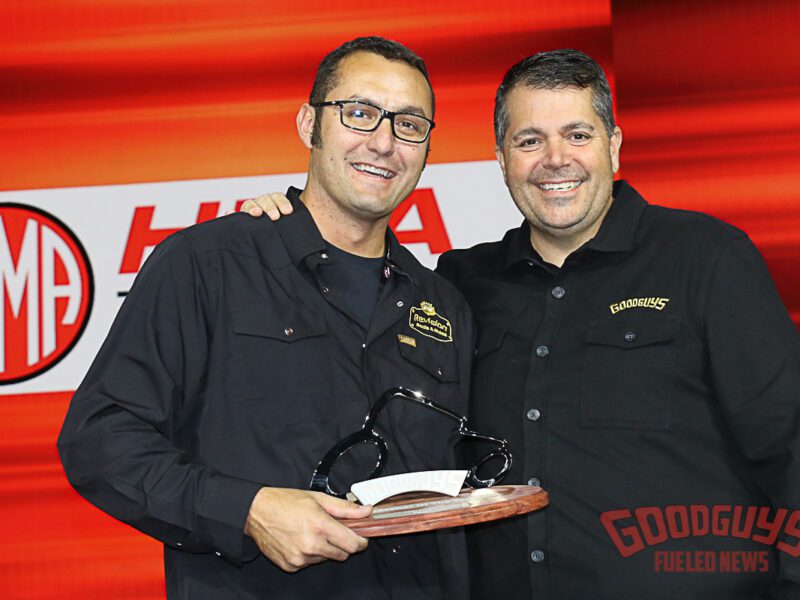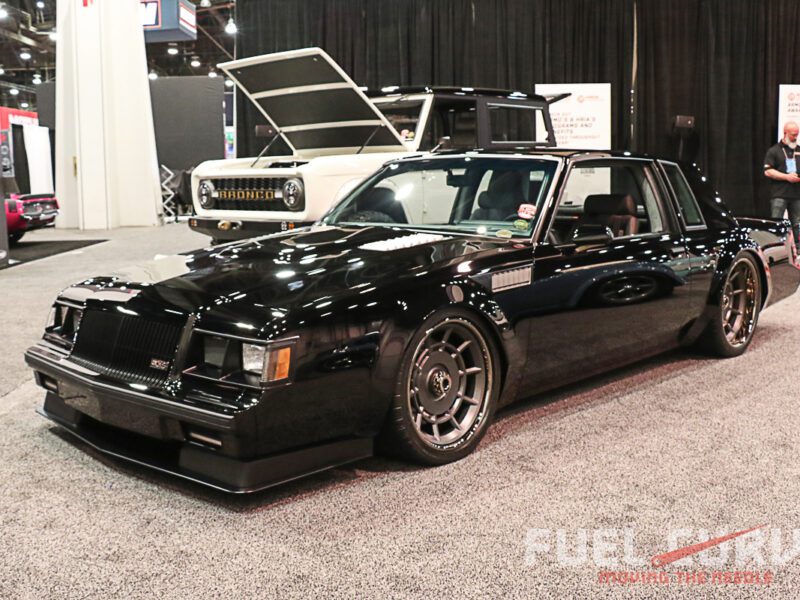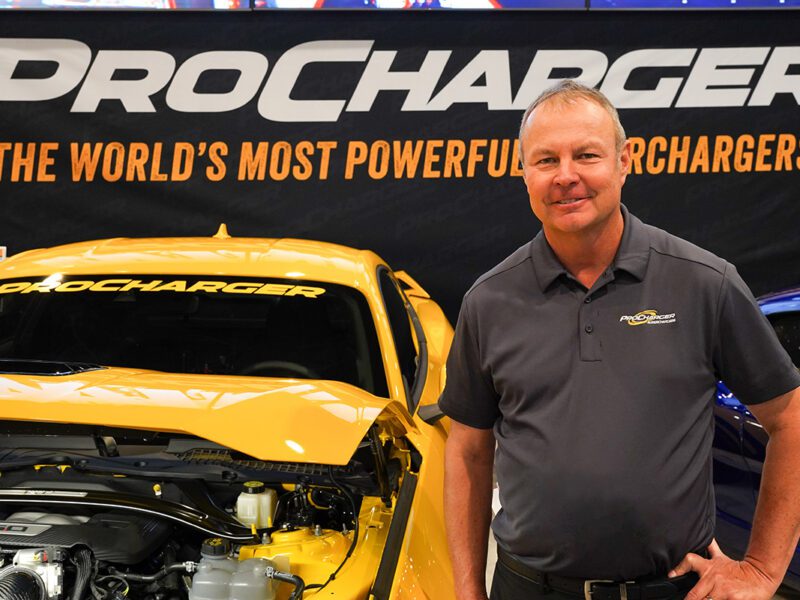Retro Rumblings – SEMA
It looks like the annual SEMA Show is all systems go this fall. Being the show will go on after being parked for the first time in its history last year, it jogged some good memories. Old-school memories.
My first trip to SEMA with the Goodguys gang was fun. It was 1990. No sign of rat rods, no sign of pro-touring cars, and probably a third of the vendors that exist today lined the convention center. Trend-wise it was all about pastels, beltline graphics, big hair, and billet wheels. Fat fenders, mini trucks, duallies, pro streeters and Easter egg VWs sat out front of the Las Vegas convention center. It looked nothing like it does today.
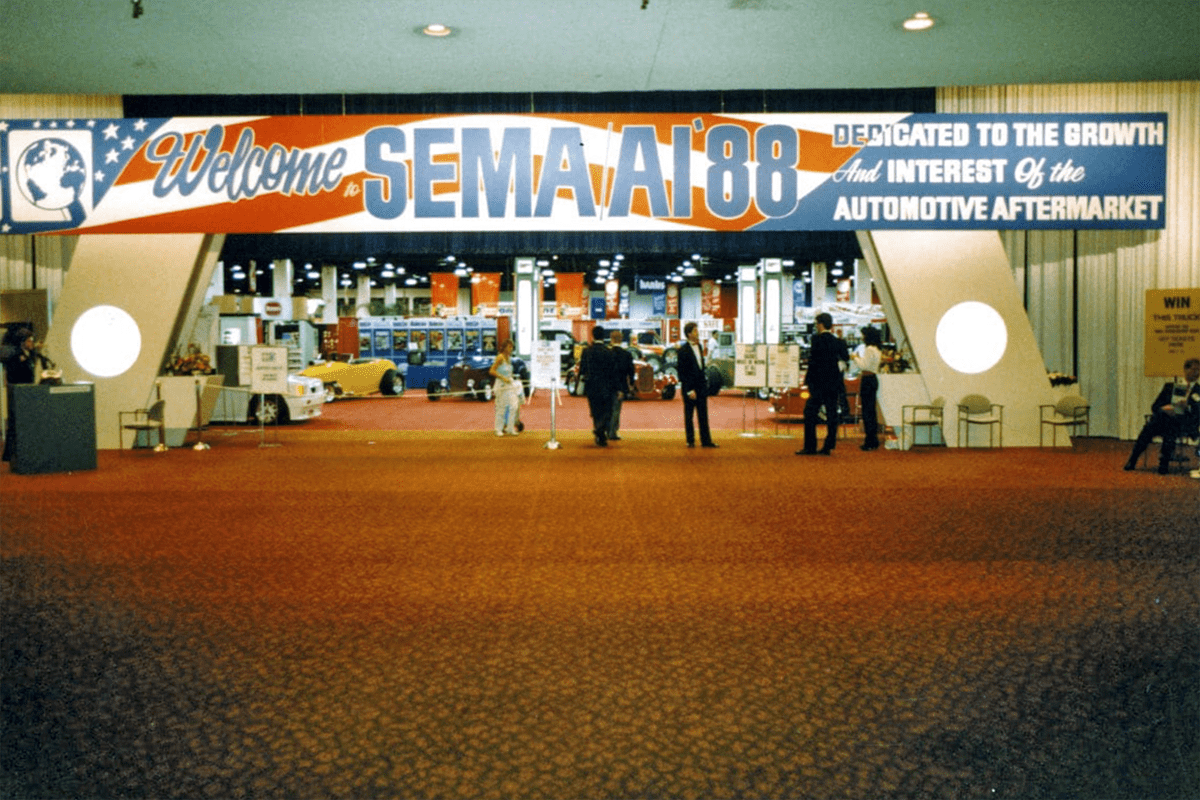
This was the view of the SEMA show entrance in the late 80s.
Inside the exhibit halls, the industry stalwarts were representing their latest wares. Vic Edelbrock held court in his booth. Jim Davis was over at B&M, Jim Ewing was the star of the Super Bell booth, Barry and Ginny Lobeck, Pete Chapouris, Jack Chisenhall and his newish Vintage Air company, Chuck Lombardo and California Street Rods – they were all on hand networking and building the scene into what it has become today. It was also a time when you could rub elbows with stars like Wally Parks, Richard Petty, and Big Daddy Don Garlits. Norm Grabowski rode his handmade scooter through the aisles. Everyone was more at ease and accessible back then. If you got lucky, you could overhear tire-kicking sessions with hot rodding’s elite. These were the golden days!
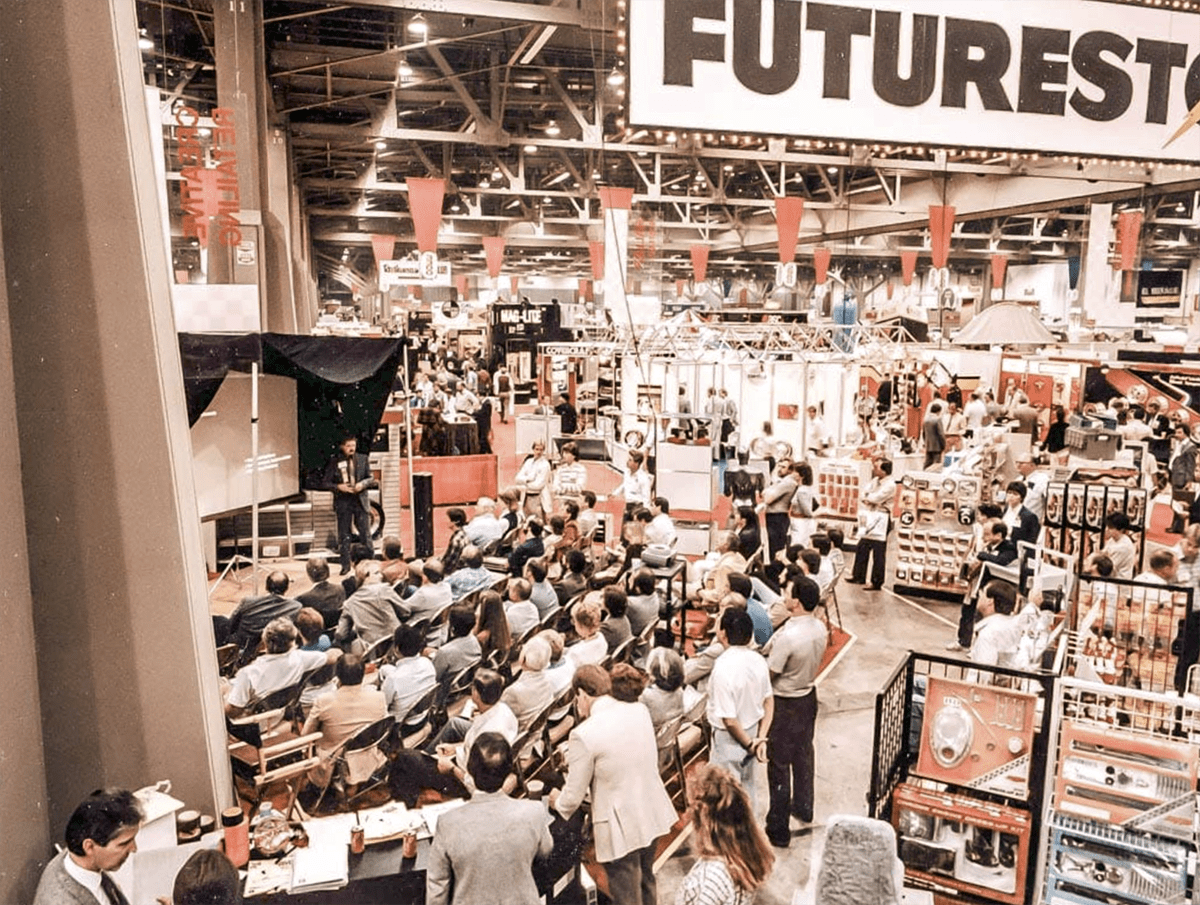
One evening after the show a bunch of us were hanging out at the bar inside the Las Vegas Hilton. I vividly remember Barry Lobeck holding court with our crew telling us off-color stories that had us in stitches over cold beers.
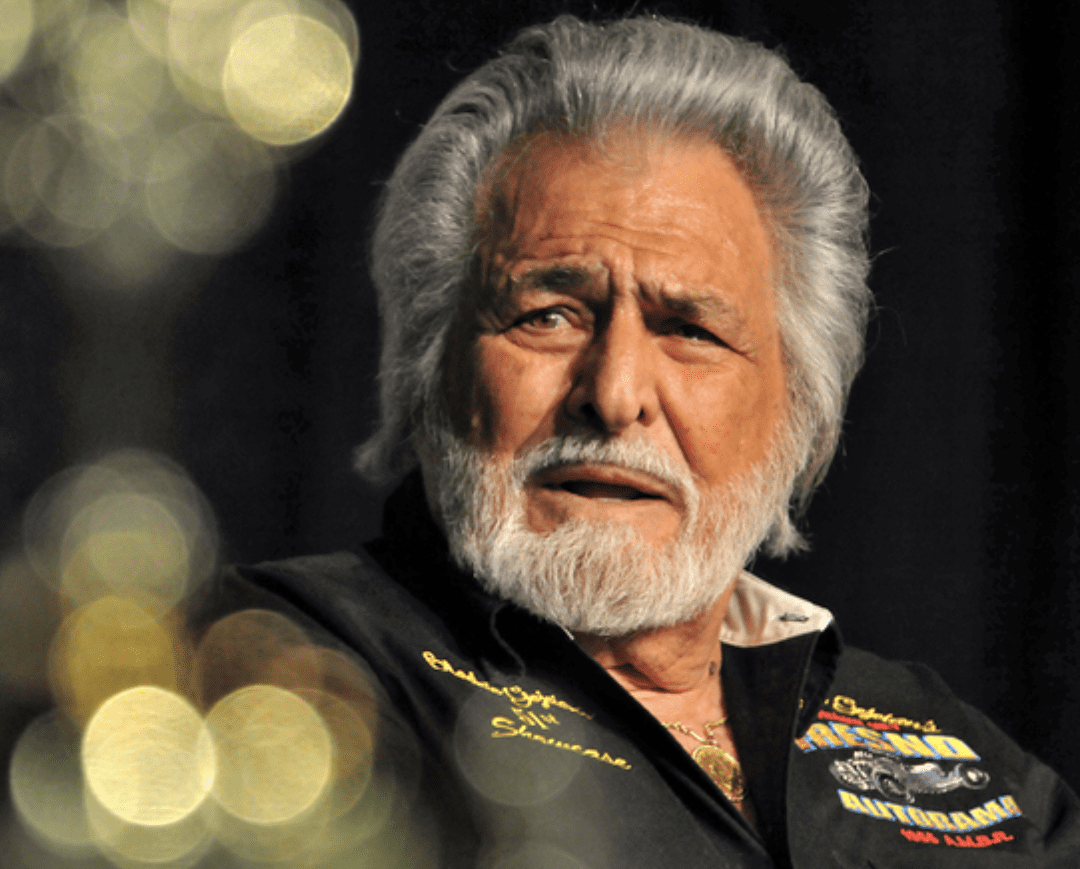
Blackie Gejeian
Over in the distance, Blackie Gejeian was hooting and hollering at the craps table. Funny thing is, when I walked past the casino on my way into the show the next morning, Blackie was still at the craps table hooting and hollering. I heard a rumor he made over thirty grand overnight. Another well-known Hilton casino regular was Larry Flynt. Yes, that Larry Flynt. I stopped and watched him play $10,000 hands of baccarat! He was sharp. Won more than he lost.
While the nightlife was legendary, the task at hand was to attract sponsors and partners. Goodguys was about to take off as a company. Our staff at the time consisted of the Meadors family, our sales guy Wayne Bloechl, a few of us kids, and regional reps like George Martin, Troy Shuttlesworth, Dick and Karen Eaton, and many other extended-family friends.
Our fearless leader Gary Goodguy was always a marketing person at heart. His creativity showed through with our innovative tchotchkes (pronounced chot-ski). What the hell is a tchotchke? It’s a random, smallish innovative item.
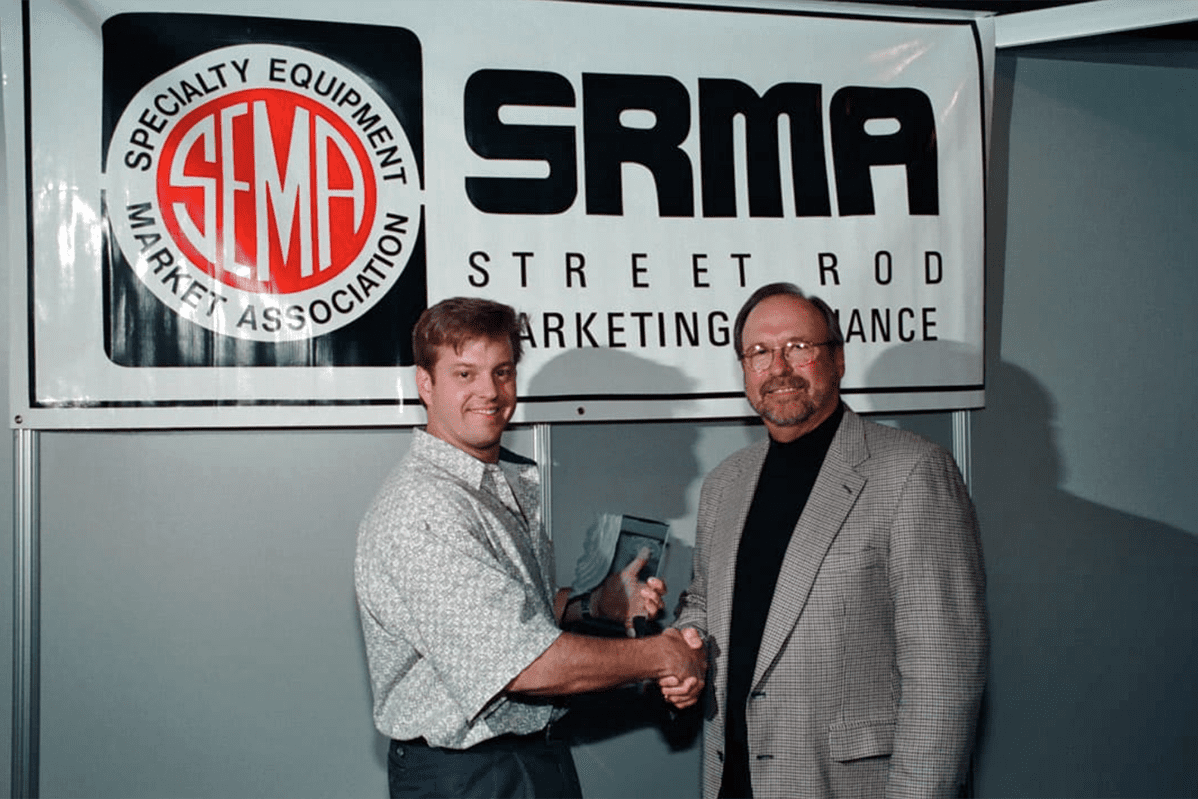
Gary Meadors presents Chip Foose with the 1st Goodguys Trendsetter award.
We had cool buttons, little fuzzy stick-on “weebles,” flamed can koozies, and other unique little freebies that kept it fresh and gave people something to remember us by.
Brand building in the late-’80s and early-’90s consisted of grassroots creativity. Marketing was just as important as it is today, but it was done so differently. To build your brand, you ran print ads in Street Rodder, Rod & Custom, Hot Rod, Popular Hot Rodding, Super Chevy and smaller club magazines. And you did trade shows, namely SEMA. Later in the ’90s, more exposure came with the creation of the Goodguys Trendsetter award for the industry’s young lions.
So here we are, the fall of 1990 and we all had our Macy’s fall catalog clothes on. The older guys wore sansabelt (remember those?) khaki pants. Us kids had slacks on and button-up long sleeve shirts. We looked like we were headed to church. We learned really quick that you can’t wear flat-soul loafers at SEMA. I mean, you could but you needed a podiatrist to get through the week. Ouch.
The first morning of the show, Gary gathered us all together for a team huddle right before they swung the doors open. He looked us all in the eye and simply said “OK – everyone go sell some stuff. Just sell, sell, sell!” I had no clue what to sell. I was too afraid to ask what I should sell. I was a newb, zero industry experience other than stringing for a few magazines. I didn’t know very many people. But sell we did.
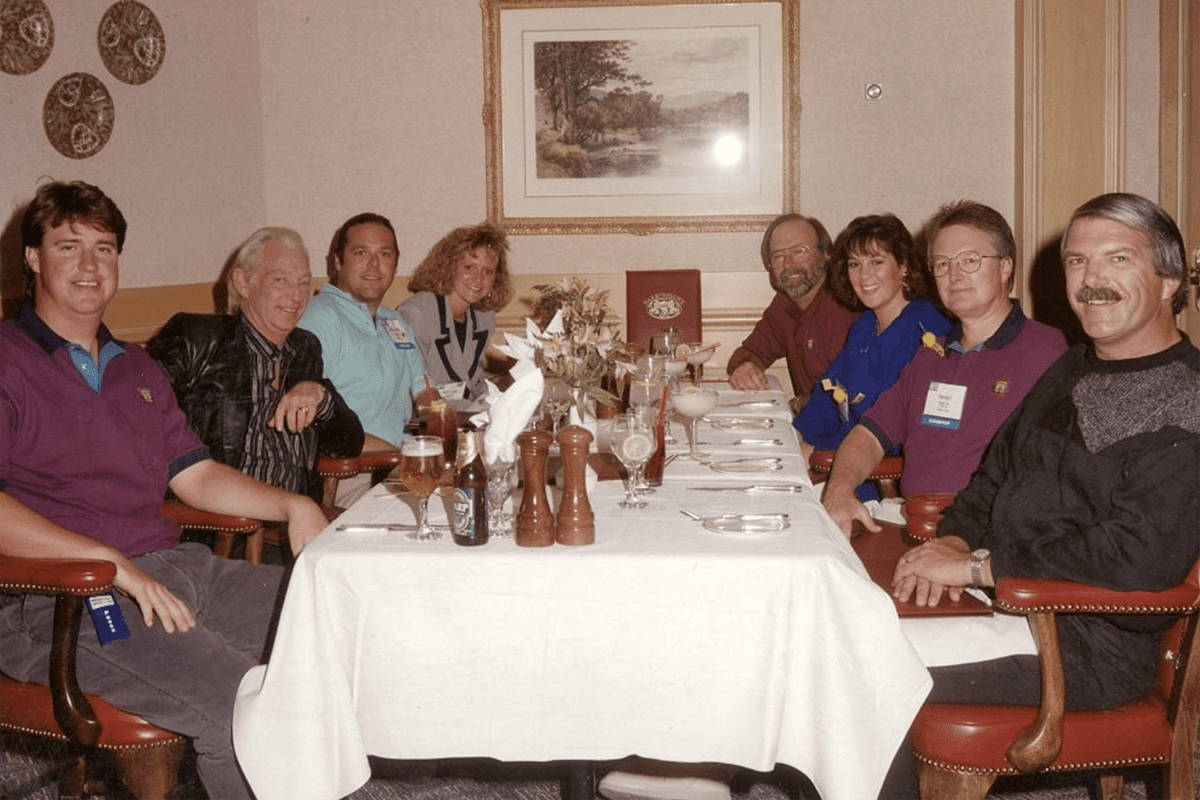
Here’s a good one – this was our staff dinner at SEMA sometime in the mid-’90s. Pictured from left to right are: John Drummond, Bill Burnham, Marc Meadors, Betsy Bennett, Gary Meadors, Kim Brizio, Tim Holt, and Steve Anderson.
It was awkward as hell walking into booths and “cold calling” on companies but I quickly learned that was how ya did it. It also wasn’t long before I realized how on board everyone was with what we were doing. Events like ours were just as important as new builds, and new parts. Soon, it was a source of pride to stick out a hand and proudly say, “I’m with Goodguys.”
And time went on, SEMA got giant. Today it basically takes over the entire city of Las Vegas. The show dwarfs every square inch of the Las Vegas Convention Center property including all three exhibit halls as well as the Sands Convention Center. It has even spilled into the halls of the Westgate Hotel which connects to the convention center. It’s quite a scene.
There were no same-day updates back in those early days. The only way you got any news from SEMA was if someone called you and told you what was going on. Today you simply look at your phone and see it all in real time. Technology has advanced SEMA, our industry, and the machinery we use to build speed parts, but tech can never replace passion and good old-fashioned networking. The art of making a deal is timeless.



